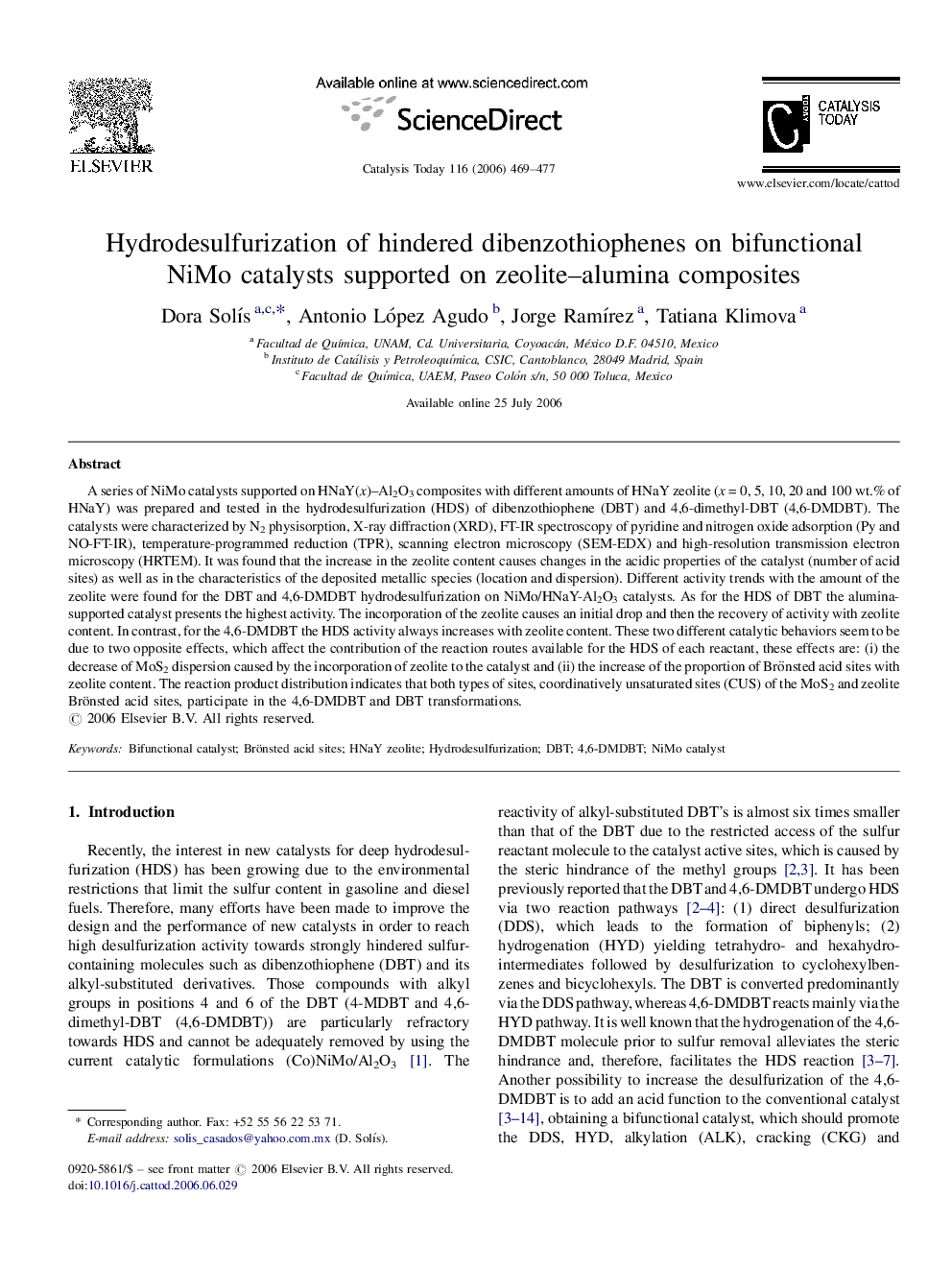| Article ID | Journal | Published Year | Pages | File Type |
|---|---|---|---|---|
| 58425 | Catalysis Today | 2006 | 9 Pages |
A series of NiMo catalysts supported on HNaY(x)–Al2O3 composites with different amounts of HNaY zeolite (x = 0, 5, 10, 20 and 100 wt.% of HNaY) was prepared and tested in the hydrodesulfurization (HDS) of dibenzothiophene (DBT) and 4,6-dimethyl-DBT (4,6-DMDBT). The catalysts were characterized by N2 physisorption, X-ray diffraction (XRD), FT-IR spectroscopy of pyridine and nitrogen oxide adsorption (Py and NO-FT-IR), temperature-programmed reduction (TPR), scanning electron microscopy (SEM-EDX) and high-resolution transmission electron microscopy (HRTEM). It was found that the increase in the zeolite content causes changes in the acidic properties of the catalyst (number of acid sites) as well as in the characteristics of the deposited metallic species (location and dispersion). Different activity trends with the amount of the zeolite were found for the DBT and 4,6-DMDBT hydrodesulfurization on NiMo/HNaY-Al2O3 catalysts. As for the HDS of DBT the alumina-supported catalyst presents the highest activity. The incorporation of the zeolite causes an initial drop and then the recovery of activity with zeolite content. In contrast, for the 4,6-DMDBT the HDS activity always increases with zeolite content. These two different catalytic behaviors seem to be due to two opposite effects, which affect the contribution of the reaction routes available for the HDS of each reactant, these effects are: (i) the decrease of MoS2 dispersion caused by the incorporation of zeolite to the catalyst and (ii) the increase of the proportion of Brönsted acid sites with zeolite content. The reaction product distribution indicates that both types of sites, coordinatively unsaturated sites (CUS) of the MoS2 and zeolite Brönsted acid sites, participate in the 4,6-DMDBT and DBT transformations.
